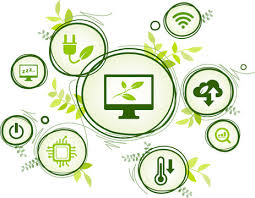In the current digital era, software development has a massive environmental impact. Data centers, cloud services, and even common applications use a lot of power, which adds to carbon emissions worldwide. As technologists and developers, it is our responsibility to produce software that not only fulfills users’ needs but also limits our damage to the environment. This is referred to as Green Coding or Sustainable Software Development.
What Is Green Coding?
Green coding is the art of developing software that’s energy-saving, carbon-reducing, and sustainable through its entire lifecycle. It’s an offshoot of Green Computing, which includes every aspect of computing that helps in environmentally friendly operations.
Core Principles of Green Coding
Efficiency at the Core: Design algorithms and code that carry out tasks with less computational power, thus saving energy.
Optimized Data Handling: Process data in an efficient manner through reducing the operations and using suitable data structures.
Hardware Awareness: Code optimally for the hardware it is executed on, resulting in improved performance and energy efficiency.
Sustainable Infrastructure: Host applications on energy-efficient machines and use cloud services fueled by renewable resources.
Lifecycle Consideration: Design the software keeping all the lifecycle stages in mind, right from development to deployment and maintenance, so as to make it sustainable at all levels.
Best Practices for Green Coding
1. Adopt Lean Coding Principles :
Lean coding is sparked by the Agile movement, focusing on simplicity and efficiency while minimizing unnecessary resource use. Core concepts are:
Eliminate Waste : Do not create features or elements that are not of value.
Build Quality In: Implement quality control throughout the development chain.
Defer Commitment: Base decisions on data to prevent duplicate work.
Fast Delivery: Release quickly, iterating with user feedback.
Optimize the Whole: Attempt to be efficient throughout the entire development process.
Adopting these guidelines can help create more sustainable software development methodologies.
2. Write Efficient Algorithms
Efficient algorithms consume less processing power, which is beneficial for energy consumption and performance. Pay attention to optimizing memory usage and computation time. For example, algorithms of lower time complexity can decrease processing time necessary for a particular task.
3. Use Cloud Computing
Cloud computing decreases data center energy consumption and computing’s carbon footprint by enabling organizations to host their applications and store their data in communal data centers, instead of hosting them in their own facilities. Large cloud providers tend to have more energy-efficient data centers and provide the tools to monitor and optimize resource consumption.
4. Automate Testing and Continuous Integration
Incorporate automated testing and continuous integration practices to streamline development workflows efficiently. Early issue detection and resolution through automated tests reduce debugging needs, conserving resources and enhancing the development process’s efficiency.
5. Promote Remote Work and Telecommuting
Encourage remote work practices for development teams in order to minimize commuting emissions and reduce energy consumption within physical office environments. Adopting remote work promotes an environmentally friendly work culture through minimizing environmental footprint, being in accord with green practices while providing flexibility and efficiency within team collaboration.
Example: Good vs. Bad Java Coding Practices
To demonstrate how coding practices can affect sustainability and performance, the following example is provided:
Bad Code:
public class Fibonacci
{
public int calculate(int n)
{
if (n <= 1)
{
return n;
}
return calculate(n - 1) + calculate(n - 2);
}
}
Good Code:
import java.util.HashMap;
import java.util.Map;
public class Fibonacci
{
private final Map<Integer, Integer> memo = new HashMap<>();
public int calculate(int n)
{
if (n <= 1) {
return n;
}
if (!memo.containsKey(n)) {
memo.put(n, calculate(n - 1) + calculate(n - 2));
}
return memo.get(n);
}
}
Analysis:
Efficiency: The bad code has a naive recursive algorithm, resulting in exponential time complexity and redundant computation. The good code utilizes memorization, keeping previously calculated values so as to eliminate redundant computations, resulting in substantial improvement in performance.
Energy Usage: The wasteful recursive calls in the bad code use up additional CPU cycles and rely on more energy. The optimized method in the good code minimizes CPU usage, hence lower energy consumption.
Maintainability: The good code is more maintainable because it utilizes memoization, making the logic easier and more comprehendible to understand and modify.
By taking such practices, developers can produce not only functional but also sustainable and maintainable code.
Tools and Resources :
1. GreenFrame
A tool developed using AI that assists programmers in quantifying and enhancing the energy efficiency of their web apps. It scans the carbon impact of websites and offers recommendations to save energy and minimize emissions.
2. Green Software Foundation
A non-profit organization dedicated to building an open ecosystem of individuals, standards, tooling, and best practices for green software development. It provides tools such as the Software Carbon Intensity (SCI) Specification, Green Software Patterns, and the Green Software Practitioner course.
3. Carbon-Aware SDK
An open-source framework allowing applications to become “carbon aware” by making their activity optimize against the carbon intensity of electricity. It offers a single API and CLI for developers to create environmentally-friendly software solutions.
